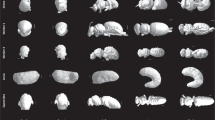Abstract
Bees, wasps, and ants have no specialized receptors for the perception of an electric field. An appropriate response to naturally occurring electric fields in bees and ants is associated with atmospheric exposure, amplified by the approach of the front of a thunderstorm. The primary transducers of mechanoreceptors that respond to displacement are related to the perception of low-frequency electric fields of high intensity by insects. The non-specific mechanism of perception of electric fields is based on irritation by induced currents that flow in the locations of their contact with each other and/or conductive surfaces. The frequency dependence of the electric field sensitivity is determined mainly by the magnitude of the current induced by it and the intensity of its contact action. The magnitude of the current induced in the outer part of the insect body is non-linearly related to the frequency of the electric field. The region with the highest sensitivity to electric fields is close to 500 Hz, which is consistent with the maximum magnitude of the induced current. At the same time, the threshold of the sensitivity to an electric field in wasps is approximately 0.04 kV/m, while in bees it is 0.45 kV/m. Ants react to the action of an electric field of 7–10 kV/m by slowing their movement. Magnetic fields and ionization, which accompany the generation of an electric field whose intensity reaches 15–20 kV/m, do not stimulate changes in the behavior of insects.



Similar content being viewed by others
REFERENCES
A. S. Presman, Electromagnetic Fields and Living Nature (Nauka, Moscow, 1968) [in Russian].
Yu. V. Serbant and M. P. Troyanskii, Radiowaves and Living Organism (Znanie, Moscow, 1969) [in Russian].
A. P. Dubrov, Geomagnetic Field and Life (Gidrometeoizdat, Leningrad, 1974) [in Russian].
Yu. A. Kholodov, Reactions of the Nervous System to Electromagnetic Fields (Nauka, Moscow, 1975) [in Russian].
O. V. Belyanskii, M. B Golant, and N. D. Devyatkov, Millimeter Waves in Biology (Znanie, Moscow, 1988) [in Russian].
E. K. Eskov, Usp. Sovrem. Biol. 123 (3), 195 (2003).
E. K. Eskov and A. I. Toroptsev, Zh. Evol. Biokhim. Fiziol. 15 (5), 500 (1979).
E. K. Eskov, Izv. Akad. Nauk SSSR, Ser. Biol., No. 1, 135 (1982).
E. K. Eskov, The Dwelings of Insects (Znanie, Moscow, 1983) [in Russian].
E. K. Eskov, Ecology of the Honeybee (Russkoe Slovo, Ryazan, 1995) [in Russian].
G. M. Dlusskii, Ants of the Genus Formica (Nauka, Moscow, 1967) [in Russian].
V. K. Dmitrienko and E. S. Petrenko, Ants in Taiga Biocenoses of Siberia (Nauka, Moscow, 1976) [in Russian].
J. A. CHalmers, Atmospheric Electricity (Pergamon, Oxford, 1967; Gidrometeoizdat, Leningrad, 1974).
E. K. Eskov, Biophysics (Moscow) 63 (3), 431 (2018).
E. K. Eskov and A. M. Sapozhnikov, Izv. Akad. Nauk SSSR, Ser. Biol., No. 3, 395 (1979).
E. K. Eskov, Zool. Zh. 64 (4), 606 (1985).
E. K. Eskov, Zh. Evol. Biokhim. Fiziol. 17 (2), 178 (1981).
E. K. Eskov, Ekologiya, No. 6, 76 (1982).
E. K. Eskov, Acoustic Signaling in Social Insects (Nauka, Moscow, 1979) [in Russian].
E. K. Eskov, Russ. J. Ecol. 28 (1), 55 (1997).
E. K. Eskov, Ethology of the Honeybee (Kolos, Moscow, 1992) [in Russian].
E. K. Eskov and A. M. Sapozhnikov, Biofizika 24 (4), 780 (1979).
E. K. Eskov and N. I. Bragin, Zh. Obshch. Biol. 47 (6), 823 (1986).
E. K. Eskov and N. I. Bragin, Pchelovodstvo, No. 2, 9 (1986).
U. Warnke and R. Paul, Umschau, No. 3, 415 (1975).
W. E. Caldwell and F. Russo, J. Genet. Physiol. 113 (2), 233 (1968).
M. M. Walker and M. E. Bitterman, J. Exp. Biol. 145, 489 (1989).
A. L. Chizhevsky, in Proceedings of the Practical Laboratory for Zoopsychology, Vol. 1 (Moscow, 1928), pp. 42–47 [in Russian].
G. Altman and U. Warnke, Apidologie 2 (4), 309 (1971).
R. Feynman, R. Leighton, and M. Sands, The Feynman Lectures on Physics (Pearson P.T.R., 1963; Mir, Moscow, 1966), Vol. 6, pp. 201–207.
N. G. Bochkarev, Magnetic Fieds in Space (Nauka, Moscow, 1985) [in Russian].
M. Lindauer and H. Martin, Z. Vergl. Physiol. 60, 219 (1968).
E. K. Eskov and G. A. Mironov, Ekologiya, No. 6, 81 (1990).
34. H. F. Little, Ann. Entomol. Soc. Am. 55, 82 (1962).
H. Autrum and W. Schneider, Z. Vergl. Physiol. 31 (1), 77 (1948).
V. P. Bindokas and B. Grenderg, Dioelectromagnetics 5, 305 (1984).
E. K. Eskov, Biofizika 20 (4), 646 (1975).
E. K. Eskov and G. A. Mironov, Dokl. Akad. Nauk SSSR 309 (1), 233 (1989).
E. K. Eskov and G.A. Mironov, Biofizika 35 (4), 675 (1990).
M. Friedmann, Electrotechnik und Maschinenbau 91 (10), 510 (1975).
L. Schua, Z. Vergl. Physiol. 34, 258 (1952).
Author information
Authors and Affiliations
Corresponding author
Ethics declarations
CONFLICT OF INTEREST
The authors declare no conflict of interest.
COMPLIANCE WITH ETHICAL STANDARDS
This paper does not describe studies using humans and animals as objects.
Additional information
Translated by E. Puchkov
Abbreviations: EFs, electric fields; MFs, magnetic fields.
Rights and permissions
About this article
Cite this article
Eskov, E.K. Perception and the Characteristics of the Response of Honey Bees, Paper Wasps, and Red Wood Ants to a Low-Frequency Electric Field. BIOPHYSICS 65, 479–486 (2020). https://doi.org/10.1134/S0006350920030045
Received:
Revised:
Accepted:
Published:
Issue Date:
DOI: https://doi.org/10.1134/S0006350920030045




